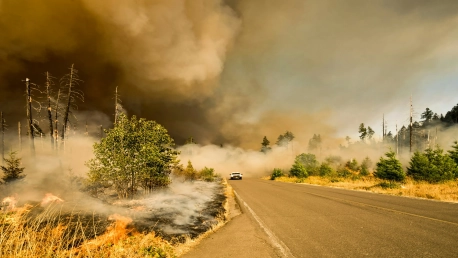In an era where natural disasters such as wildfires become more frequent and ferocious, utilities are at the forefront of a battle to enhance the safety and resilience of the electrical grid. With devastating effects on the environment, wildlife, and human communities, utilities must devise innovative solutions to tackle the increasing threat of wildfires. The utility industry faces the dual challenge of ensuring a reliable power supply while preventing the catastrophic consequences of these disasters. By leveraging advanced digital technologies, utilities are evolving to combat wildfires more effectively, prompting a shift towards systems that promise greater protection and reliability.
The Historical Struggle Against Wildfires
For years, utility companies have practiced the reclosing of power lines to quickly restore service after transient faults. However, this method’s potential to ignite wildfires due to malfunctioning equipment contacting flammable materials has posed a significant risk. This prompted the adoption of Public Safety Power Shutoffs (PSPS), where power is deliberately cut to prevent possible ignition during high-risk conditions. Though PSPS can be a necessary step, it comes at the cost of increased outages and a less favorable customer experience. As a result, there is an urgent need for alternatives that offer both safety and reliability without the inconvenience of prolonged service disruptions.The challenges of traditional wildfire prevention underscore the inadequacy of obsolete methods in an age of rising climate threats. Reclosing power lines has, in some instances, caused more harm than good. Instances of wires sparking fires upon re-energization have pushed utilities to curb this practice, especially during extreme weather. Meanwhile, the broader implications of PSPS demonstrate that sacrificing customer service for safety is not a sustainable or customer-friendly approach. These challenges have ignited a quest for smarter, more precise mitigation strategies that can adapt to the delicate balance between risk and reliability.
Digital Shift in Wildfire Prevention
Digital tools are revolutionizing how utilities address wildfire risks. Advances in technology have provided utilities with modern relays and protective devices capable of disabling transmission lines before they can contact the ground, thereby averting potential fires. Furthermore, these technologies integrate geospatial data regarding fire threats and weather conditions to give operators a comprehensive, real-time view of the grid’s status. By correlating this information with additional factors like wind speeds, population density, and the geography of the area, utilities can significantly refine their decision-making processes and risk evaluations. This level of precision in both monitoring and response is unprecedented in the industry and paves the way for more proactive and targeted interventions.The adoption of digital control systems signifies an era of advanced grid analytics, where real-time information is a powerful asset for utility companies. These systems consolidate a myriad of data streams, providing operators with an instant understanding of grid health. Geospatial mapping of fire risks and detailed weather analyses allow for quick perception and assessment of potential wildfire triggers. Combined with other risk factors, such as local demographic and geographic insights, utilities are now more empowered than ever to predict and preemptively address areas of high wildfire risk with remarkable accuracy.
Customized and Automated Protection Strategies
Embracing intelligent digital platforms, utilities are beginning to automate their response protocols, tailored specifically to the risk profiles of particular grid sections. This marks a departure from the one-size-fits-all approach, minimizing broad outages and instead focusing efforts where they are most needed. These automated systems enact predefined rules when high-risk conditions are detected, targeting only the segments of the grid under threat. Such precision significantly reduces the extent of PSPS events and the inconveniences they create for customers. By streamlining processes and focusing on problem areas, grid management becomes more efficient and less disruptive.Technological advancements have furnished utilities with the ability to discern the most vulnerable segments of the grid swiftly. Automated systems execute predetermined actions based on the granular data available, sparing broader sections from the impact of PSPS and reducing the duration of outages. This selective approach not only improves the customer experience but also bolsters the utility’s capacity to contain potential fire threats without resorting to widespread power cuts.
The Impact of Digital Solutions on Utility Resilience
In an age when wildfires are increasingly common and potent, utility companies stand on the frontline, striving to safeguard and fortify our electrical grid. These infernos wreak havoc on ecosystems, wildlife, and human settlements, driving the urgent need for innovative defenses. Utilities are tasked with a twofold mission: to maintain a steady power flow and avert the dire impacts of wildfires. Embracing cutting-edge digital tools is key in this fight, signaling a shift towards smarter, more secure, and resilient systems. As utilities adapt and advance, they play a pivotal role in ensuring both the provision of reliable electricity and the mitigation of wildfire risks. Their progress in these areas is crucial to protect communities and help prevent the environmental loss associated with these fierce natural events.









